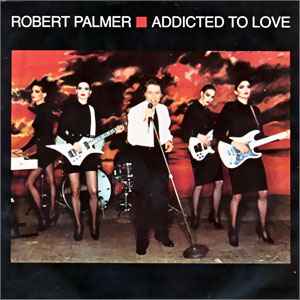Raising Hell |
 |
Released: May 27, 1986 Peak: 3 US, 17 RB, 41 UK, 32 CN, 50 AU Sales (in millions): 3.0 US, 0.6 UK Genre: rap |
Tracks: Song Title [time] (date of single release, chart peaks) Click for codes to singles charts.
Total Running Time: 39:46 |
Rating: 4.435 out of 5.00 (average of 13 ratings)
Quotable: “Rap’s first masterpiece” – Josh Tyrangiel/ Alan Light, Time magazine Awards: (Click on award to learn more). |
About the Album: “Darryl McDaniels, Jam Master Jay and the Reverend Run wore black leather suits, gold chains and Adidas with no laces. They looked like drug dealers, and plenty of people thought they were. In reality, they were middle class kids from Queens desperate to become rock stars, and Raising Hell was their defining statement.” TL “Run-D.M.C. were primed for a breakthrough into the mainstream, but nobody was prepared for a blockbuster on the level of Raising Hell. [Their first two albums] – Run-D.M.C. and King of Rock – had established the crew’s fusion of hip-hop and hard rock, but that sound didn't blossom until Raising Hell, partially due to the presence of Rick Rubin as producer. Rubin loved metal and rap in equal measures and he knew how to play to the strengths of both, while slipping in commercial concessions that seemed sly even when they borrowed from songs as familiar as ‘My Sharona’ (heard on It’s Tricky).” AMG “Along with longtime Run-D.M.C. producer Russell Simmons, Rubin blew down the doors of what hip-hop could do with Raising Hell because it reached beyond rap-rock and found all sorts of sounds outside of it. Sonically, there is simply more going on in this album than any previous rap record – more hooks, more drum loops (courtesy of ace drum programmer Sam Sever), more scratching, more riffs, more of everything. Where other rap records, including Run-D.M.C.’s, were all about the rhythm, this is layered with sounds and ideas, giving the music a tangible flow.” AMG “They opened with Peter Piper (‘Now Peter Piper picked peppers, but Run rapped rhymes/ Humpty Dumpty fell down, that's his hard time’) to show off their spitting speed, followed it with ‘It's Tricky’ to prove their ferocity, My Adidas to test their promotional skills and ‘Walk This Way’…to show off their catholic tastes. And those are just the first four tracks.” TL “But the brilliance of this record is that even with this increased musical depth, it still rocks as hard as hell, and in a manner that brought in a new audience. Of course, the cover of Aerosmith’s Walk This Way, complete with that band’s Steven Tyler and Joe Perry, helped matters considerably, since it gave an audience unfamiliar with rap an entry point.” AMG It was, after all, “the first rock-rap collaboration to hit the Top 10.” TL However, “if it were just a novelty record, a one-shot fusion of rap and rock, Raising Hell would never have sold three million copies. No, the music was fully realized and thoroughly invigorating, rocking harder and better than any of its rock or rap peers in 1986, and years later, that sense of excitement is still palpable on this towering success story for rap in general and Run-D.M.C. in specific.” AMG “Raising Hell is rap’s first masterpiece, and it’s just as audacious now as it was two decades ago.” TL |
Resources and Related Links:
First posted 4/15/2008; last updated 12/5/2021. |










